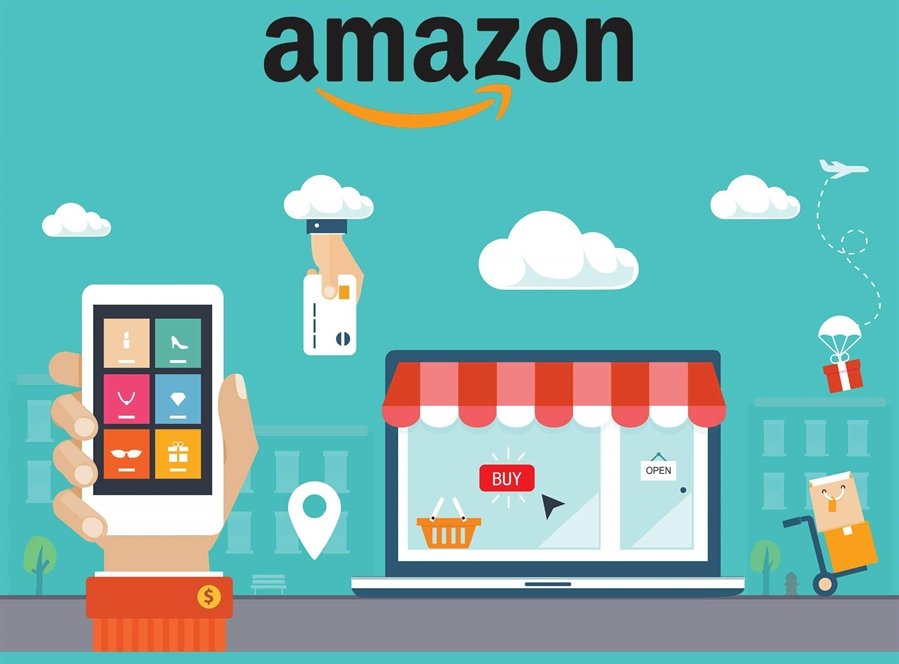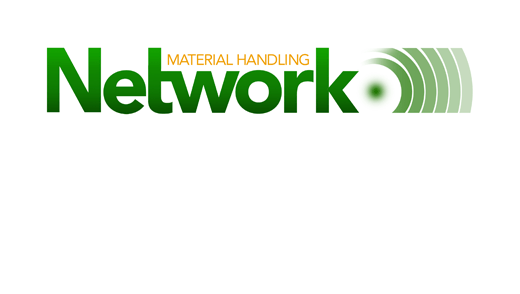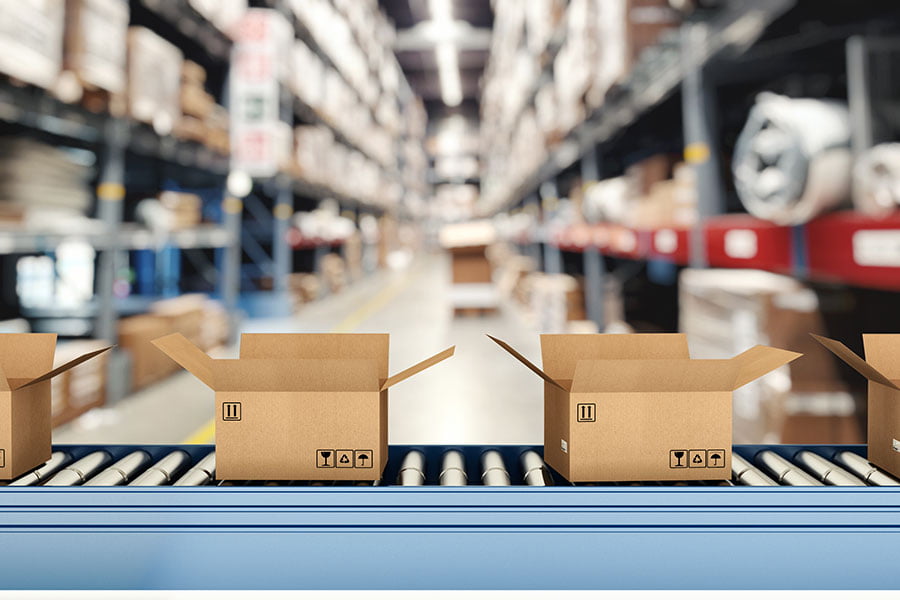Published December 12, 2017
Amazon is one of the most written about companies of the modern era. There are daily reports of astounding accomplishments and news of their plans moving forward. Why write more about the number one online retailer in the U.S.? Because they are leading the pack by a wide margin, with respect to the U.S. online retail world.
It is important to understand where Amazon and the entire retail industry is headed. There are also some parts of the Amazonification of commerce that are not as clear as others.
Online retail has evolved so fast that the word evolve is not really an appropriate term for the advancements being made. It truly has been a revolution in a “winner take all” scenario. Amazon is close to having 70% of all U.S. online retail sales. There is no end in sight to the innovations Amazon is bringing to the marketplace and to consumers. Retail sales growth for Amazon has topped 20% since 2002.
It is not uncommon for a company to set the pace for an entire industry and define that industry. An example, people used to call their vacuum cleaner a “Hoover”, regardless of the brand they used. Companies that lead the way and dominate have long been associated with the entire industry, Amazon has reached this status. When consumers think about online retail they think of Amazon first. There-in lies the challenge that other retailers and brands have in today’s marketplace.
What we may already know about Amazon but need to discuss:
Amazon seems to know what to do and how to do it before it becomes clear to the market. This is one of their strengths. Amazon continues to lead the marketplace with innovations, new approaches to sell products, and satisfy consumers. It is that relentless drive to satisfy and even exceed expectations that pushes them to the next good idea.
Amazon is also highly focused on their supply chain and rapid fulfillment of consumers orders. Very few companies match their intensity when it comes to supply chain. Several years ago, Amazon began a quest to build out a supply chain infrastructure that no one company could match. During those years, Amazon invested billions of dollars for their future supply chain network. The investment is paying off in a major way. Research indicates that Amazon has roughly 300 fulfillment operations with 39 more on the way. This distribution network fuels their growth by giving today’s consumers what they want, when they want it. Amazon is utilizing the network effect to leverage supply chain assets to their fullest and get economies of scale no one company can match.
Amazon is not just a U.S. company. International online sales are more than $40B This segment of the business operates at a loss. We can only assume that a priority of Amazon is to reverse this loss and turn it into a profit over the longer term.
Chart of Global Percent of Sales
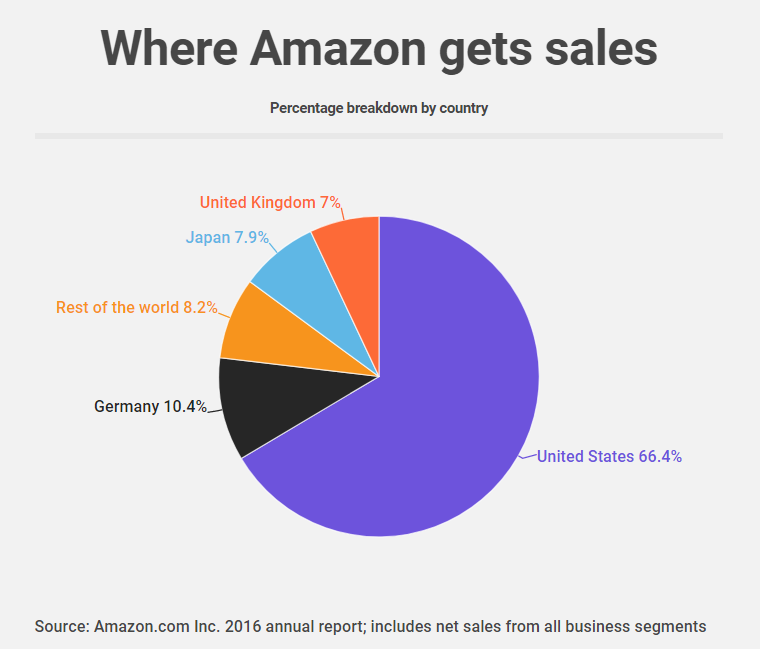
Amazon continues to improve its return on sales (margins), year after year going from 2.5% in 2014 to report 5.1% in 2016. They are building momentum with increased sales and increased percent of total U.S. eCommerce sales each year.
We can also read about the progress that some competitors have made in their eCommerce pursuits. Companies like Walmart, Target, Home Depot, and others are experiencing strong eCommerce growth.
Despite all of Amazon’s success more and more sellers are becoming disillusioned or are openly against Amazon. The issues with private labeling products and price discounting of branded products are leading to serious questions. Also, the long-standing issue of data integrity and Amazon’s use of consumers data. The double-edged sword is that consumers, generally think Amazon is golden and is their first choice for the products they want and need.
What our research has pointed out about Amazon:
- Amazon is attacking established brands with private label products. This trend is prevalent in apparel and footwear, more recently in sporting goods and now furniture. No product line is out of their realm.
- The acquisition of Whole Foods is a powerful sign of Amazon’s entry in to the food and beverage business.
-
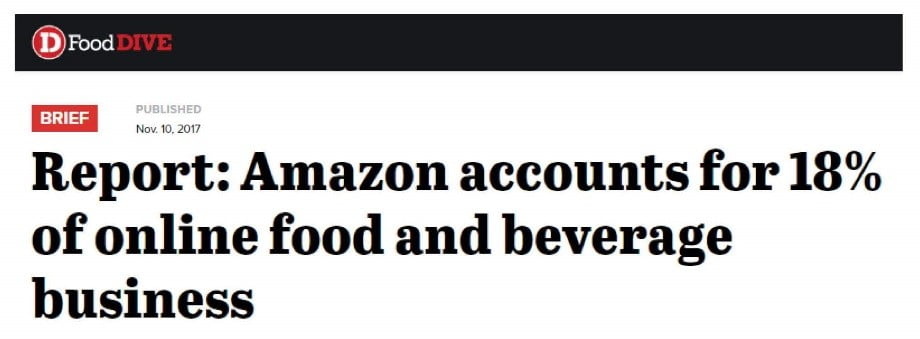
Online grocery sales are also being strongly pursued by Amazon. They currently have an 18% share of this market, which is roughly double that of their nearest competitor. This is clearly a priority of Amazon and a source of major investment for the future.
- AmazonFresh is changing as nine states are being dropped from the service. Amazon appears to be blaming others for the AmazonFresh closures.
- Projections for Amazon for Holiday 2017 indicates continued success against competition, capturing 60-70% of online sales.
- Price discounting has become a dilemma with brands selling on Amazon. How happy would you be if Amazon was selling your $10.00 product on their site for $9.00?
- Globally, Amazon faces some stiff competition from Alibaba and others. If growing their eCommerce footprint globally is an objective, this will be a challenge. It appears that Amazon is not willing to go head-to-head with Alibaba.
- Amazon’s competition is in catch-up mode. Even with Amazon’s position, big companies, niche companies, and aggressive companies will have some wins in the fight over consumers.
More distribution infrastructure is on the way from Amazon, to increase volume and move closer to customers.
What we will see from Amazon in the future:
Consumers, for the most part have become comfortable buying online. There are exceptions, but the younger generation is helping to drive online sales forward. We should expect Amazon to have an answer to what is next for retail sales.
Expect private label products to continue to be a focus for Amazon. They are working on becoming the number one provider across many business categories. Their product offerings to date have been meticulously thought out and well done, at a price that most competitors cannot attain.

Source: geekwire.com
Grocery is a major category for Amazon’s future. They will extend their reach in online grocery, using Whole Foods as a starting point for other grocery initiatives. It is difficult to see where this could end up, as Amazon has the bandwidth to revolutionize grocery as we know it.
Amazon has acquired a number of companies, as far back as 2013, that are posed to launch new products and services. The list is long and varied including books, gaming, and international markets to name a few.
It is not obvious how far Amazons global strategy reaches, but it stands to reason that they are interested in crossborder trade, as much as anyone else. Competing in other markets may not be their near-term goal, but we believe they will more fully leverage their capabilities in other regions of the world at some point.
As well as being a product company, Amazon is a technology company. Their tools and processes are some of the most advanced in existence. We believe they will continue to push the boundaries of what is possible to optimize their supply chains, operations, and transportation, reducing the cost of service and delivery speed.
Amazon has a fairly high level of automation in their distribution and sortation facilities. Productivity enhancing technologies are being developed all the time. We expect Amazon to continuously invest in leading automation technology to keep their state of art facilities.
Collaboration: the best weapon against Amazon:
Amazon has a jump start on and momentum in eCommerce retail that most other companies cannot overcome. Individually, company’s supply chain infrastructure is not dense enough to win all the time. Some success stories fill the literature, but the truth is Amazon is on top and primed to stay there. The best hope is, for companies to collaborate sharing technology and facilities to get closer to the customer and match Amazon’s delivery capabilities. If these facilities are highly productive and located in major markets, competing with Amazon becomes possible.
Conclusion:
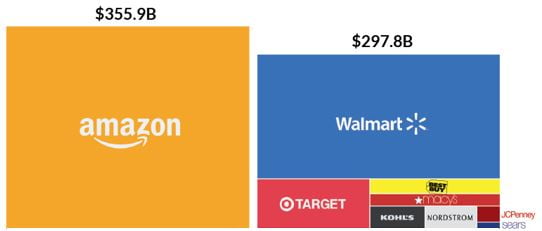
Market Value as of December 2016 | Businessinsider.com
Amazon is the number one online retailer in the U.S. and the number two U.S. retailer overall behind Walmart. Amazon shows no signs of slowing down or weakening. Their core philosophies and practices, which are leading their growth, continue to have merit. The “but” in this discussion is:
- Competitors are fighting back.
- Many see the advantages of collaboration as a way to leverage assets and resources effectively.
- Companies are finding new ways to entice consumers to buy from them.
- Alternate strategies are making a dent in Amazon’s advantage.
The remaining question is, how important is global eCommerce to Amazon? If global eCommerce is a part of Amazon’s plan there will be an even longer story to write.
To learn more about the retail online revolution contact Tompkins International and speak with one of our experts. We will be happy to answer any questions you may have.
